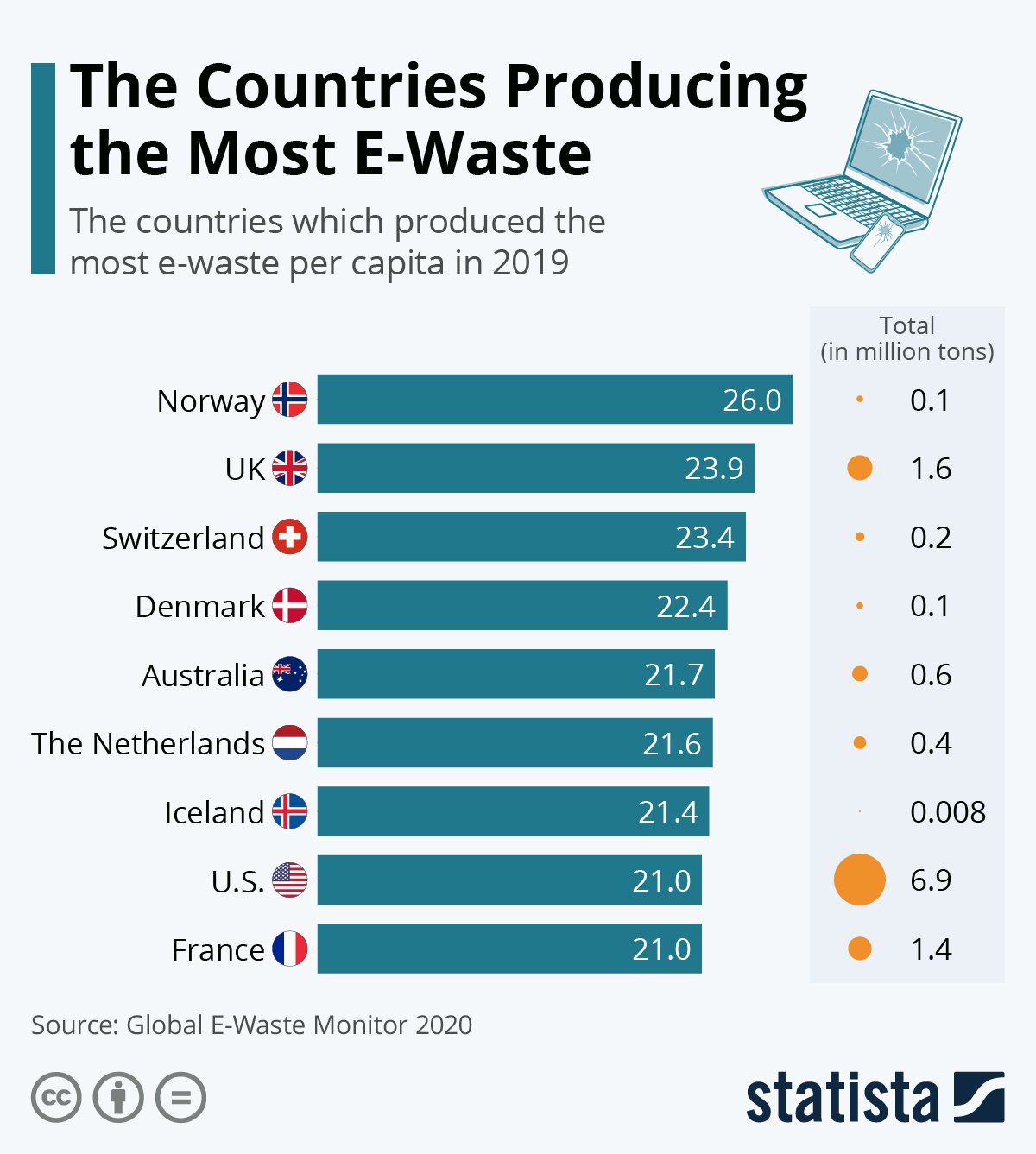According to the Global E-waste Monitor, 53.6 million tons of electronic waste was generated worldwide in 2019. The figure increased by 21 percent in just five years, making e-waste the fastest growing domestic waste stream in the world. The largest producer of electronic waste is China with a total of 10.1 million tons. In relative terms, however, the Chinese are a long way from the world's top at 7.2 kilograms per capita.
In comparison, many European and Anglo nations produce upwards of 20 kilograms per capita annually. Scandinavian countries rank especially high. Norway leads the ranking at 26 kilograms of e-waste per capita and year – a number potentially upped by the prevalence of electric cars in the country whose batteries count as (enormous chunks of) e-waste. The UK ranks second at close to 24 kilograms per capita, while Australia and the U.S. produce between 21 and 22 kilograms.
Another factor in the rapid growth of e-waste is appliances becoming cheaper but are more seldomly built to last. But according to the researchers at the United Nations University compiling the report, the growth of e-waste volumes also signals a rise in living standards around the world, as more and more people are able to afford appliances that make everyday life easier. While the growth of e-waste might therefore not be entirely stoppable, the makers of the report caution that recycling and safe disposal capacities have to grow at the same pace as e-waste streams in order to keep up.
















